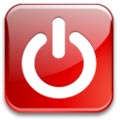
 Web Design Lesson Plan Web Design Lesson Plan
Learn how to make a website with this easy to follow lesson plan that's fun for kids. Get some great hints and tips on how to use the basics of Dreamweaver, creating web pages as part of your own website.
Web design is fun to learn about and will allow you to express your own web ideas, using links, images, text and other resources to create a site devoted to anything you want! This lesson will give you the help you need to get started today.
|
|
|
Introduction:
Thing you might want to include on your web page or website include:
- Photos from a camera.
- Pictures & images from your computer.
- Anything you want to write about.
- Graphics you have created yourself.
- Links to friends pages or other websites you recommend.
- Anything else you can think of or learn about along the way.
Website making instructions:
- The following is a general guide for making your web page or a source of tips if you get a little stuck along the way.
- You can see how your web page will look on the internet at any stage by pressing the F12 button while in Dreamweaver, this will open your page in Internet Explorer.
- Remember to frequently save your work by pressing ctrl-s, you can also undo mistakes you make or things you don’t like by pressing ctrl-z.
Getting started:
- Open Dreamweaver.
- Create new HTML.
- Save as example.html (any name is fine but save as index.html if the page will be your website homepage).
- Take note of the ‘Layout’ menu at the top of the screen, there are 2 options, standard & layout. Layout is good for making tables and designing the layout of your page, standard is used when doing anything else.
- Take note of the ‘Properties’ menu at the bottom of the page, this has all the usual word processing options such as text size, colour, font, alignment as well as ‘link’, useful for making links to other pages/sites.
- Drag tables where you would like to place images, text, links etc. This will be your page layout. Clicking on the green table icon allows you to draw tables while clicking on the blue icon allows you to draw cells inside the tables.
- You can now start adding things like text and images to your page!
Images:
-
When making a website it is important to allow the pages to load on someone’s computer screen as fast as possible, so rather than using huge images it’s a good idea to resize them beforehand.
-
Once you have done this you can use the images by going through the insert > image menu in Dreamweaver. Put the images wherever you want on your page & remember that you can align them to the left, right or centre.
-
Extra: Try using rollover images, insert > image object > rollover image. When your mouse moves over the original image it will change to a new one, try to make the 2 images the same size. One idea is to use a question mark image & have it change to something funny or unexpected.
Linking:
Final words:
-
Try to make your page as original as possible, adding colour is a great idea and you might even like to give your page a theme (eg animals, spooky, sports, funky etc).
-
Good luck and have fun!
|
|